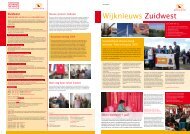freakonomics
freakonomics
freakonomics
You also want an ePaper? Increase the reach of your titles
YUMPU automatically turns print PDFs into web optimized ePapers that Google loves.
exaggerating. Male and female users typically reported that they are about an inch taller<br />
than the national average. As for weight, the men were in line with the national average,<br />
but the women typically said they weighed about twenty pounds less than the national<br />
average.<br />
Most impressively, fully 70 percent of the women claimed “above average” looks,<br />
including 24 percent claiming “very good looks.” The online men too were gorgeous: 67<br />
percent called themselves “above average,” including 21 percent with “very good looks.”<br />
This leaves only about 30 percent of the users with “average” looks, including a paltry 1<br />
percent with “less than average” looks—which suggests that the typical online dater is<br />
either a fabulist, a narcissist, or simply resistant to the meaning of “average.” (Or perhaps<br />
they are all just realists: as any real-estate agent knows, the typical house isn’t<br />
“charming” or “fantastic,” but unless you say it is, no one will even bother to take a<br />
look.) Twenty-eight percent of the women on the site said they were blond, a number far<br />
beyond the national average, which indicates a lot of dyeing, or lying, or both.<br />
Some users, meanwhile, were bracingly honest. Eight percent of the men—about 1 in<br />
every 12—conceded that they were married, with half of these 8 percent reporting that<br />
they were “happily married.” But the fact that they were honest doesn’t mean they were<br />
rash. Of the 258 “happily married” men in the sample, only 9 chose to post a picture of<br />
themselves. The reward of gaining a mistress was evidently outweighed by the risk of<br />
having your wife discover your personal ad. (“And what were you doing on that<br />
website?” the husband might bluster, undoubtedly to little avail.)<br />
Of the many ways to fail on a dating website, not posting a photo of yourself is perhaps<br />
the most certain. (Not that the photo necessarily is a photo of yourself; it may well be<br />
some better-looking stranger, but such deception would obviously backfire in time.) A<br />
man who does not include his photo gets only one-fourth the volume of e-mail response<br />
of a man who does; a woman who doesn’t include her photo gets only one-sixth the<br />
response. A low-income, poorly educated, unhappily employed, not-very-attractive,<br />
slightly overweight, and balding man who posts his photo stands a better chance of<br />
gleaning some e-mails than a man who says he makes $200,000 and is deadly handsome<br />
but doesn’t post a photo. There are plenty of reasons someone might not post a photo—<br />
he’s technically challenged or is ashamed of being spotted by friends or is just plain<br />
unattractive—but as in the case of a brand-new car with a for-sale sign, prospective<br />
customers will assume he’s got something seriously wrong under the hood.<br />
Getting a date is hard enough as it is. Fifty-seven percent of the men who post ads don’t<br />
receive even one e-mail; 23 percent of the women don’t get a single response. The traits<br />
that do draw a big response, meanwhile, will not be a big surprise to anyone with even a<br />
passing knowledge of the sexes. In fact, the preferences expressed by online daters fit<br />
snugly with the most common stereotypes about men and women.<br />
For instance, men who say they want a long-term relationship do much better than men<br />
looking for an occasional lover. But women looking for an occasional lover do great. For<br />
men, a woman’s looks are of paramount importance. For women, a man’s income is









